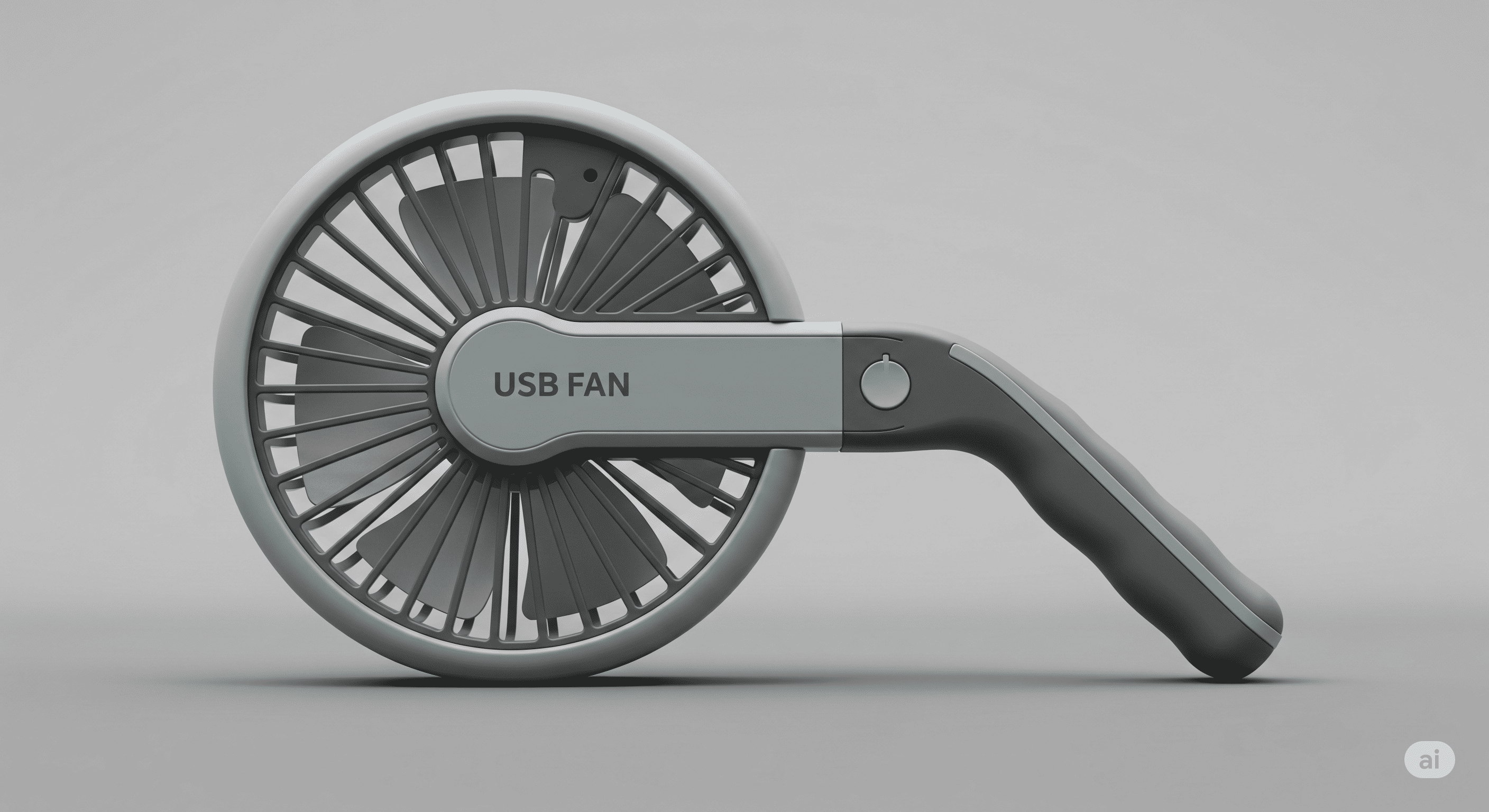Kingsgrove Branch:
USB Fan

USB fan – a surprisingly versatile tool, from the smallest desk-top to the taller tower. Imagine a portable cooling solution that's not just convenient, but also surprisingly effective. They're perfect for those sweltering summer days, or when your laptop is getting a little too toasty. Their energy efficiency makes them a practical and eco-friendly choice for staying cool, wherever you are
USB fan are a lifesaver in the summer heat, but did you know they often use micro USB ports? Micro USB is a pretty common connector, and if your fan's cord is damaged, you might need a replacement. Fortunately, finding compatible replacement cords is usually pretty straightforward, just like keeping cool with a good USB fan
This comprehensive guide explores the world of USB fans, delving into their design, performance, and practical applications. We'll cover everything from choosing the right fan for your needs to troubleshooting common issues. Get ready to discover the cool benefits of this tiny powerhouse
USB Fans: A Comprehensive Guide
USB fans have become a popular choice for cooling in various settings, from home offices to laptops. They offer a convenient and often affordable way to manage temperatures, especially in warm environments or when using electronics that generate heat. This guide explores USB fans in detail, covering their features, performance, design, applications, maintenance, and user feedback
Introduction to USB Fans
USB fans are compact, portable cooling solutions powered by a USB port. Their small size makes them ideal for desktops, laptops, and even handheld devices. They typically feature a small fan that draws air through an intake and expels it, creating a gentle breeze to help cool the immediate area. A key advantage is their energy efficiency, drawing minimal power compared to other cooling solutions, see USB types
Different types cater to various needs, from small mini fans to larger desktop and tower models
Different Types of USB Fans
- Mini USB Fans: These are the smallest and often the most portable, perfect for desk or laptop use. They are typically lightweight and compact
- Desktop USB Fans: A step up in size, these fans offer more airflow and are suitable for desks, workstations, or small rooms. They often have adjustable speeds or multiple air outlets
- Tower USB Fans: These are larger and can provide substantial airflow for cooling larger spaces or more powerful electronic equipment. They are often more robust in construction and have a higher capacity for cooling
Common Uses for USB Fans
- Home Offices: Keep your workspace cool and comfortable during the day
- Laptops: Reduce overheating, especially during extended use or in warm environments
- Desktops: Improve the thermal environment of a workstation to prevent hardware damage
- Gaming setups: Provide targeted cooling to components to prevent performance drops
- Portable Devices: Cool electronic gadgets on the go, such as tablets or smartphones
USB Fan Technology and Energy Efficiency
USB fans utilize a small, high-speed fan motor. Their design is focused on energy efficiency, meaning they use minimal power to deliver a significant cooling effect. This is often achieved through smart motor design and efficient airflow management
Comparison of USB Fan Types
| Size | Typical Usage |
|---|---|
| Small | Laptops, desktops (small areas) |
| Medium | Workstations, home offices |
| Large | Gaming PCs, large rooms |
Performance and Functionality
USB fan performance is influenced by airflow, noise level, and power consumption. Higher airflow generally means better cooling, but it might also result in a louder fan. Power consumption should be considered, especially when using multiple USB devices
Factors Influencing Performance
- Airflow: Measured in cubic feet per minute (CFM), higher airflow indicates a greater cooling capacity
- Noise Level: Measured in decibels (dB), lower noise levels are generally preferred for quiet environments
- Power Consumption: Measured in watts, lower power consumption is better for energy efficiency and battery life
Comparing Fan Model Performance
Different models offer varying levels of performance. Factors like the fan's size, motor type, and airflow design contribute to these differences. Some models might be louder than others, but they may also provide a more significant cooling effect
Cooling Improvement Examples
USB fans can effectively improve cooling in situations where heat buildup is a concern, like when working on a laptop for hours or gaming on a high-performance PC
USB fans are a lifesaver, right? But if your newfangled USB-C port isn't playing nice with your old-school USB device, you might need an adapter. Check out this guide on USB-C to USB conversions to get your fan spinning again. Then, you can finally enjoy that cool breeze! Perfect for those sweltering summer days
Fan Lifespan and Durability
The longevity of a USB fan depends on its quality of construction, usage frequency, and environmental conditions. Carefully handling and avoiding dust accumulation are key to extending its lifespan
Design and Features
The design of USB fans considers aesthetics, material selection, and ergonomic aspects. Different materials impact the fan's durability and appearance
Design Elements
- Material Selection: Common materials include plastic, metal, and composite materials, each affecting the fan's weight, durability, and cost
- Aesthetic Considerations: USB fans are available in various colors and designs, appealing to different user preferences
- Ergonomic Aspects: Placement and design considerations ensure comfortable use and easy handling
Functional Feature
- Adjustable Speed Settings: Allow users to tailor the cooling intensity to their needs
- Multiple Air Outlets: Distribute the airflow more effectively, providing a wider cooling zone
Usage and Applications: Usb Fan
USB fans are versatile and can be used in various situations to improve cooling
Situations Where USB Fans Are Useful
- Workspaces: Home offices, study areas, and professional settings
- Electronic Devices: Laptops, desktops, and portable devices
- Specific Environments: Hot climates, areas with high heat generation
Wrap-Up
In conclusion, USB fans are more than just a cooling solution; they're a practical, stylish, and often surprisingly effective tool for staying cool and comfortable. From their compact designs to their energy-efficient operation, they offer a wide range of benefits. Whether you're at your desk, on the go, or need to cool down a specific area, there's a USB fan out there to suit your needs
Stay cool, stay productive, and embrace the versatility of this amazing technology
Questions Often Asked
What are the different types of USB fans?
USB fans come in various sizes and styles, including mini, desktop, and tower models. Each type offers a different level of cooling and is suited to different applications
How noisy are USB fans?
Noise levels vary depending on the specific model. Generally, smaller, more compact fans tend to be quieter than larger, more powerful ones. Check reviews to get a better idea of the noise level for a specific model
Can USB fans damage my laptop?
No, a well-designed USB fan is unlikely to damage your laptop. However, make sure to use a compatible USB port and avoid blocking air vents
How long do USB fans last?
The lifespan of a USB fan depends on usage and care. Proper maintenance and avoiding extreme temperatures can help extend its lifespan significantly
Recent posts

Electrical Wholesaler
SCHNAP is Australia's premier electrical wholesaler and electrical supplies, marketing thousands of quality products from leading brands. Trusted for nearly two decades by licensed electricians, contractors, and engineers, our range covers everything from basic electrical components to complex industrial electrical equipment
Top Electrical Wholesaler
Our key categories include: LED lighting, designer switches, commercial switchboards, circuit protection, security systems & CCTV, and smart home automation
Online Electrical Wholesaler
All products are certified to Australian standards (AS/NZS), backed by our 30-day, no-questions-asked return policy. Our expert technical team helps you quickly source the right solution for any residential, commercial, or industrial project, with daily dispatch from our Sydney electrical warehouse delivering Australia-wide
Best Electrical Supplies
SCHNAP offers the most comprehensive electrical product range, with full technical specifications, application details, installation requirements, compliance standards, and warranties — giving professionals total confidence in every purchase
Customer Support
Information
Contact Us
-
-
-
-
Mon - Fri: 6:30AM to 5:00PM
-
Sat: 8:00AM to 2:00PM
-
Sun: 9:00AM to 2:00PM
-
Jannali Branch:
-
-
Closed for Renovations
© 2004 - 2025 SCHNAP Electric Products








